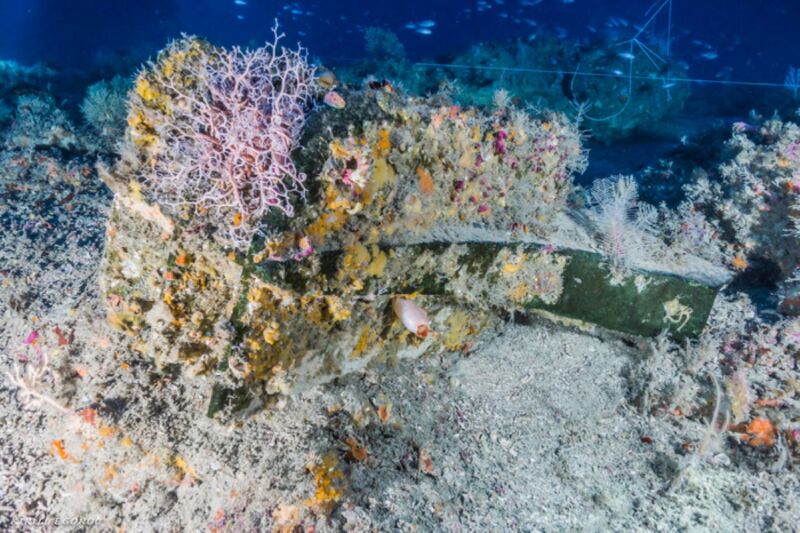
Enlarge / The ship’s ram as it was found on the seabed off Sicily at a depth of nearly 90 m, covered in marine life. (credit: K. Egorov/SDSS-GUE)
Shipwrecks hold an enduring fascination, both because of how they connect us to the past and because of the potentially priceless treasures that could be lurking within their sunken remains. They are also invaluable resources for scientists interested in studying how marine ecosystems evolve and thrive, since sea creatures inevitably colonize the wreckage, transforming destruction into life. In fact, more than 100 distinct animal species were found living on a 2,200-year-old Mediterranean shipwreck, according to a recent paper published in the journal Frontiers in Marine Science.
“Shipwrecks are often studied to follow colonization by marine organisms, but few studies have focused on ships that sank more than a century ago,” said co-author Sandra Ricci of Rome’s Istituto Centrale per il Restauro (ICR). “Here we study for the first time colonization of a wreck over a period of more than 2,000 years. We show that the ram has ended up hosting a community very similar to the surrounding habitat, due to ‘ecological connectivity’—free movement by species—between it and the surroundings.”
Rome and Carthage were archrivals in the mid-3rd century BCE who fought three wars. The first war began in 264 BCE on and around the island of Sicily, and it dragged on for 23 years. Almost everything we know about the First Punic War comes from the writings of Greek historian-turned-Roman hostage Polybius, who wrote The Histories about a century after the First Punic War ended. While there has been some debate about the accuracy of his accounts, most modern historians still rely heavily on Polybius, and his version of events is typically accepted when there are contradictions in other historical sources.





